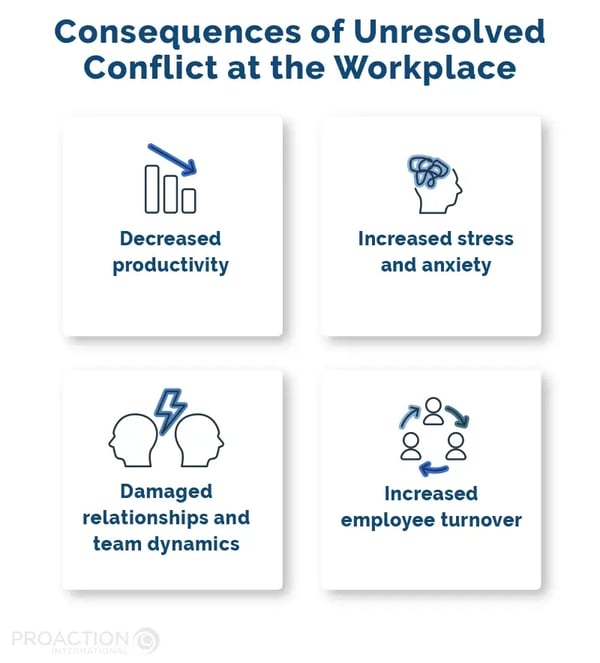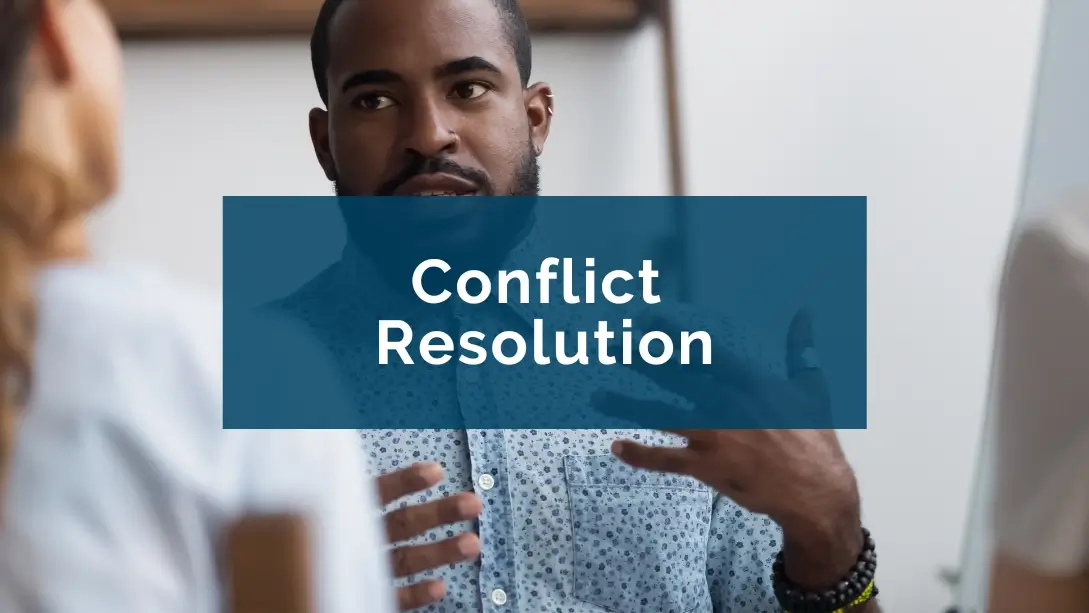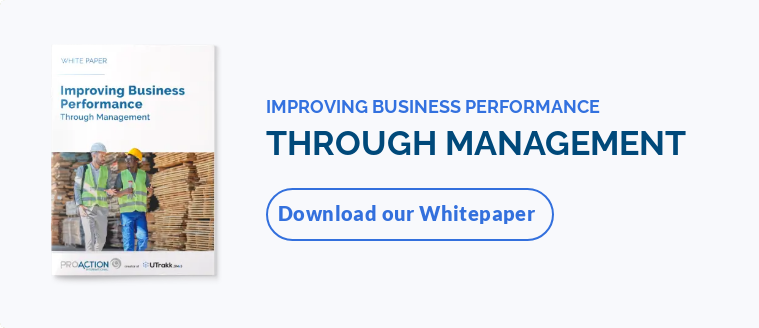How does diversity affect conflict?
According to the CPP study, 85% of US workers report having experienced workplace conflict. That's because most individuals find it easier to work and communicate with others with similar values and interests, increasing the likelihood of workplace conflict with people having a diverse background
The landscape concerning diversity and identity is evolving rapidly, presenting numerous challenges for leaders. For many leaders I coach and engage with on this topic, adapting quickly enough to avoid conflict is a major preoccupation.
Maxime Gaudreau, Coach and trainer at Proaction International
Examples of diversity conflicts
Many cases of diversity conflict in the workplace mirror examples of diversity issues in society at large. Here are three types of diversity conflict in the workplace.
Age and Generational Differences
Age diversity in the workplace brings together a diverse team of employees from different generations. Each generation has distinct attitudes, values, and communication styles shaped by their experiences and societal influences. These generational differences can lead to conflicts, as misunderstandings and stereotypes may arise.
For instance, older employees may feel that younger colleagues need more experience or respect for traditional work practices. On the other hand, younger employees may perceive more senior colleagues as resistant to change or technologically challenged.
Ethnic and Cultural
With the globalization of the workforce, work environments are increasingly becoming more ethnically and culturally diverse. While diversity can bring numerous benefits, such as increased creativity and innovation, it can create employee conflict. Ethnic and cultural diversity-based conflict manifests in diverse workplaces in the following ways:
- Communication barriers can arise due to differences in language, accents, and communication styles, leading to misunderstandings and misinterpretations.
- Cultural norms and values vary across different ethnic and cultural groups. Conflicting viewpoints on work practices, decision-making processes, and hierarchy can result in clashes and disagreements.
- Stereotypes, biases, and prejudices can emerge when people from different backgrounds interact. Preconceived notions about certain ethnic or cultural groups can lead to discrimination, favoritism, or exclusion, creating a hostile work environment.
- Power dynamics and unequal representation can fuel conflicts. If one ethnic or cultural group dominates leadership positions, it may lead to feelings of marginalization and underrepresentation among other groups, leading to resentment and disputes.
It happened to me during a coaching session where I cited a celebrity who generally has a positive image as an example. Still, the mention quickly triggered an adverse reaction from one of the participants, tinged with anger. He explained that he was from a region of the world where the inhabitants had suffered due to the actions of that public figure. This situation ultimately led to group dialogues concerning each individual's sensitivities regarding potentially offensive subjects.
Maxime Gaudreau, Coach and Trainer at Proaction International
Lack of Acceptance of LGBTQ+ Individuals
Another type of diversity conflict arises when there is a lack of acceptance for LGBTQ+ individuals in the workplace. That kind of conflict can manifest as overt or subtle forms of discrimination or exclusion.
LGBTQ+ individuals may face microaggressions, such as derogatory comments or jokes, or experience exclusion from social activities and professional opportunities. They may also encounter challenges related to gendered dress codes, access to gender-neutral facilities, or lack of support for transgender employees.
Consequences of Unresolved Conflict at the Workplace
Unresolved conflict in the workplace can have many negative consequences that can affect both individuals and the overall work environment. Here are four expected effects of unresolved conflict:
- Decreased productivity: Unresolved conflicts tend to escalate and create tension among employees. This tension can reduce focus and motivation, resulting in decreased productivity. Employees may spend time and energy on the conflict rather than on their specific tasks, leading to missed deadlines and lower-quality output.
- Increased stress and anxiety: Unresolved conflict can create a stressful and anxious work environment for all involved parties. Employees may feel uncertain, on edge, or constantly on guard, fearing confrontations or negative interactions.
- Broken relationships and team dynamics: Unresolved conflict can strain relationships between individuals involved and affect team dynamics. Trust and cooperation may erode, leading to decreased collaboration and ineffective communication.
- High employee turnover: Individuals caught up in unresolved conflicts may feel frustrated, unappreciated, or unsupported, leading them to seek employment elsewhere. According to a Randstad study, 58% of employees left their jobs due to toxic office politics.

Encouraging open and nonviolent communication, implementing conflict resolution strategies, and fostering a positive work environment can help prevent conflicts from escalating and support a harmonious and diverse workplace.
Today, the fight against discrimination is no longer limited to the legal framework but also appeals to social and moral consciousness. This concept is increasingly being incorporated into management, requiring leaders to understand the notion and consider this reality – a diverse population with diverse needs – in their management practices.
Angélique Emeric, Advisor at Proaction International
Your role as a manager
As a manager, you play a crucial role in engaging your teams. Then it is essential to invest efforts in preventing and managing diversity-related conflicts in the workplace. Your primary function is to prevent. That involves :
- Make your teams aware of the importance of diversity and inclusion in the workplace.
- Evaluate your organization's policies and practices in terms of inclusion to determine whether opportunities exist to go further in developing a harmonious working environment.
- Be proactive by drawing up an action plan to develop an inclusive culture in your company.
Secondly, your role as a manager is to establish trust and maintain good contact with your teams to detect the appearance of any conflict immediately. The sooner you identify a dispute, the sooner you'll be able to manage and resolve it by taking appropriate action. You'll reduce the negative impact of conflict and quickly restore a harmonious and optimal environment for your employees' performance.
In order to promote productive exchanges and healthy collaboration, creating an environment of psychological safety seems to be the fundamental element to prioritize. To cultivate this space, leaders play a key role by acting as models of respect and support.
Maxime Gaudreau, Coach and Trainer at Proaction International
Examples of effective conflict resolution
Here are three examples of effective diversity conflict resolution at the workplace that demonstrate the power of addressing conflicts arising from cultural differences, sexual orientation, generational gaps, and gender bias.
Example 1: Bridging Cultural Differences
Alex and Sanjay, two employees from different cultural backgrounds, clash during a team project. Alex, a direct communicator, considers Sanjay's indirect style evasive, causing frustration. The conflict reaches a boiling point, affecting team dynamics.
The team leader facilitates a conflict resolution session where they recognize that Alex and Sanjay's cultural differences influence their communication styles. The leader then organizes a cultural awareness workshop, fostering understanding and empathy among team members.
Alex and Sanjay engage in open discussions, implement effective communication strategies, and embrace each other's perspectives.
Example 2: Managing Generational Conflicts
At a technology company, generational differences create conflicts between Sarah, a young employee, and Tom, an older colleague. Sarah often proposes new ideas, while Tom prefers traditional approaches. The HR department decides to address the issue by organizing a workshop on generational diversity. They invite employees to share their experiences and challenges.
Sarah and Tom gain insight into each other's perspectives. They initiate a mentorship program to bridge the generational gap, where Sarah shares her technological expertise, and Tom imparts his industry experience. This collaboration creates a harmonious work environment, resulting in improved performance and mutual respect.
The best attitude to adopt seems to be that of listening, openness, curiosity, and the courage to question one's beliefs.
Maxime Gaudreau, Coach and Trainer at Proaction International
Example 3: Addressing Gender Bias
In a male-dominated engineering firm, female employees like Emily face gender bias, with their ideas often dismissed or overshadowed. Determined to change the situation, Emily seeks support from the management.
The company responds by establishing a diversity and inclusion task force comprising employees from various departments. They conduct an anonymous survey to identify biases and implement unconscious bias training for all staff. The task force also organizes mentorship programs for female employees, pairing them with influential leaders within the company.
Emily, now supported by her mentor, gains confidence and actively contributes to projects. The task force also establishes a zero-tolerance policy for gender-based discrimination, encouraging employees to report any incidents.
Strategies for Preventing Diversity-Based Conflict
An effective way to resolve diversity conflicts is to prevent them from happening in the first place. Here are four ways to do this:

Establish a Diversity and Inclusion Policy
Develop a comprehensive diversity and inclusion policy communicating the organization's commitment to fostering a diverse and inclusive workplace. The policy should outline the expectations for respectful behavior, non-discrimination, and equal opportunities for all employees.
Provide Diversity Training
Offer diversity training programs that educate employees about different cultures, perspectives, and identities. These programs should focus on building employee awareness, empathy, and understanding.
Training can include interactive exercises, case studies, and discussions to help individuals recognize their biases, make positive relationships, challenge stereotypes, and learn effective communication and conflict-resolution skills.
A good practice would be to address the next conflict BEFORE it occurs. Between two conflicts, both parties experience fewer emotions, less tension, and less judgment, making it much easier to discuss how they feel during these conflicts, share potential solutions, and even ask each other to try to stop having these conflicts. This also has the effect of (in a way) neutralizing the next conflict.
Michel Coupal, Research and Development Director at Proaction International
Foster an Inclusive Culture
Actively promote an inclusive culture within the organization by encouraging teamwork, collaboration, and open dialogue. Create opportunities for employees to engage in cross-cultural interactions, such as diversity networking events or employee resource groups. Encourage employees to share their experiences, ideas, and perspectives in a safe and respectful environment.
Address Biases and Microaggressions
Educate employees about unconscious biases and microaggressions and provide tools to address and mitigate them. Encourage them to speak up if they witness or experience discriminatory behavior, and provide them with channels to report such incidents confidentially.
Establish clear procedures for investigating and addressing complaints promptly and impartially. Finally, train managers and supervisors to identify and address biases and microaggressions within their teams proactively.
Improve your leadership skills to manage conflict in the workplace.
In today's professional world, managing diversity-related conflicts has become a crucial issue that demands attention and action. To effectively address this challenge, organizations need to adopt proactive measures and prioritize inclusive practices.
One of the most effective strategies is investing in leadership development coaching, pivotal in empowering leaders and managers to transition from reactive to proactive management styles. This shift allows them to prevent conflicts from arising in the first place and foster a positive and inclusive work environment.
By embracing proactive management, your leaders become better equipped to identify potential issues, promote open communication, and facilitate constructive dialogue among diverse team members. This approach paves the way for a unified and qualitative workplace where employees feel valued and included, ultimately enabling them to unlock their full potential.
One of the tips I often give in coaching is to use difference and diversity as an asset. It's about turning the situation around and not seeing diversity as a source of conflict but rather as a source of wealth by leveraging the strengths and differences of each individual.
Angélique Emeric, Advisor at Proaction International












